

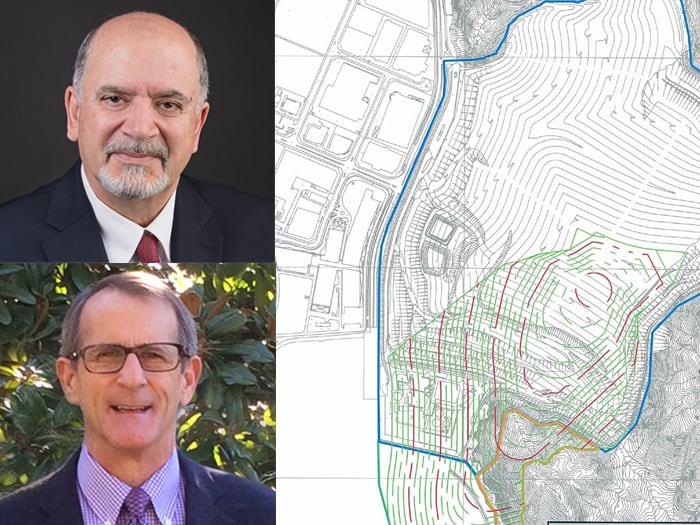
Today’s modern landfills offset inflation and labor costs through transformative reduction, recycling, and reuse programs while turning methane into renewable energy. Advanced remote monitoring and control technology and data capture provide many efficiencies and insight to landfill operators and owners running larger and larger collections of plants and facilities on their landfills.
The trend to go larger necessitates more landfill design sophistication and master planning to recoup the growing capital investment upfront. During this month’s SCS Engineers webinar and open forum, our panel will discuss landfill design, focusing on optimizing your site layout and maximizing air space – a landfill’s golden egg.
Live on Thursday, September 29, 2022
2:00 pm Eastern Time for 1 hour
This educational, non-commercial webinar with a Q&A forum throughout is free and open to all who want to learn more about landfill design. We recommend this month’s discussion for landfill owners/operators, solid waste planners, environmental engineers, municipalities, and environmental agency staff.
Certificates of Attendance are available for attendees who registered on Zoom and attended the live session.

Quinn Bernier currently chairs the SCS Engineers Young Professional Group. We recently spent time with Quinn following her return from SCS’s Environmental College, a national training forum held annually.
What is your title at SCS Engineers? Please briefly describe your responsibilities at SCS.
I’m a Project Engineer, mostly working on landfill gas system design projects, odor mitigation, and air compliance reporting. I also participate in SMM (sustainable materials management) projects, such as waste characterization studies and convenience center design.
Why did you come to work here? What attracted you to SCS?
I wanted to make a big move after graduating college, and I was looking for practical, tangible work in environmental engineering. The interview really sold me, though – everyone at the office was so welcoming and approachable. I felt like I fit in right away.
What is your favorite part of working at SCS?
Everyone says this because it’s true – the people that work here. There are so many smart, awesome people at SCS that are a pleasure to work with.
What do you feel is your greatest achievement/contribution to date?
Being on the Young Professionals Planning Committee and helping the YP Program grow the past three years while we’ve really expanded the breadth of resources we provide despite COVID – from the leadership interview series, to providing professional licensing advice, and launching a company-wide mentoring program. It’s been a privilege to be a part of serving other young professionals at the company and a lot of fun.
What was your greatest challenge, and how have you overcome it?
I’m still working on it since this largely comes with experience, but gaining confidence in my professional work and opinions. It was hard coming straight out of school to think of myself as a consultant, but I think a big help for me is remembering that I am doing a good job when I am doing the best I can for a client.
Why do you believe you have been successful?
Just putting myself out there. SCS has a very choose-your-own adventure style, and I think being willing to jump headfirst into whatever comes my way has opened a lot of doors. I also owe a lot to my peers and mentors for encouraging me to learn and grow.
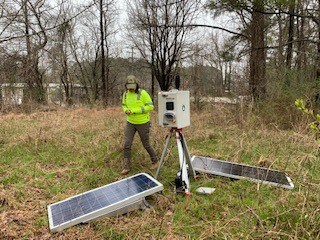
You recently became a Professional Engineer (P.E.). What advice do you have for someone that is studying for the P.E. exam?
This might only apply to the P.E. Environmental, but make sure you get to know the equation manual (even the tables and charts) and practice using the search function on it. It will save a lot of time on exam day.
What are your favorite hobbies?
I play competitive soccer, keep fish, and I’m always trying new crafts. I’ve been mostly pressing flowers and sewing lately.
Tell us your favorite aspect of the YP program. What is your role as YP Chair?
The best part about the YP Program is that it’s 100% run by YPs. As the current Chair, I lead the group in our biweekly calls, send out the Program emails, and serve as a Young Professionals representative at the SCS Board Meetings twice a year.
We thank Quinn and all of our remarkable YPs for dedicating their careers to helping businesses and their communities run cleaner and safer! Join one of the most award-winning and results-oriented environmental engineering and consulting firms in the nation.
Learn more about SCS Engineers.
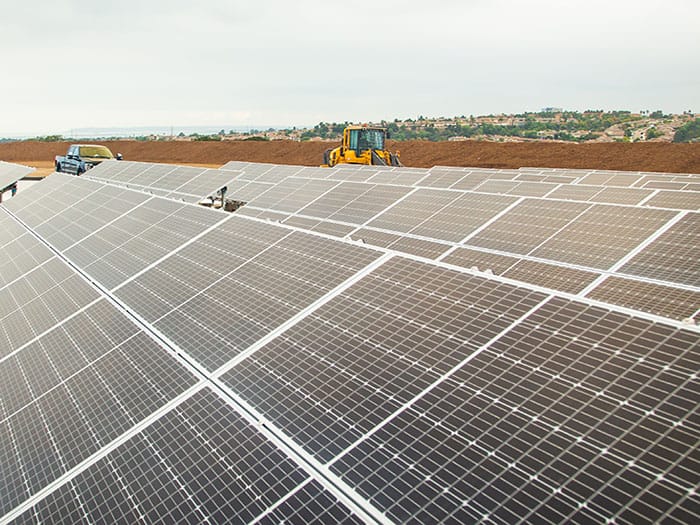
2022 Organics Management Facility of the Year.
The National Waste & Recycling Association recently named Republic Services’ Otay Compost Facility the 2022 Organics Management Facility of the Year. The Otay facility in Chula Vista, Calif., is the first fully solar-powered compost facility in the state, recycling food and yard waste from throughout the San Diego region.
The solar-powered facility opened for business last October, helping communities in San Diego County meet the requirements of California’s SB1383 law mandating the diversion of organic waste from landfills. This unique facility, designed by SCS Engineers in collaboration with Sustainable Generation, operates completely off the grid. It can process 200 tons of food and yard waste daily from Chula Vista, Carlsbad, and customers throughout the San Diego region.
The design uses renewable energy to run 100 percent of the composting operations at the site. The facility design includes technologies to speed the maturation rates and reduce excessive odors. Blowers to aerate the organic material, oxygen and temperature sensors, and advanced compost cover technology produce a high-quality product.
“Republic Services took the goals of SB 1383 further to reduce emissions of short-lived climate pollutants. They’re running a sustainable facility that enables residents, businesses, and government to easily reuse and recycle more organic materials within a smaller carbon footprint than ever expected,” says Vidhya Viswanathan, engineer and project director.
Additional Resources:
Composting and Organics Management
Renewable Energy for Landfills and Landfill Facilities

Reducing CO2 is essential for our planet to thrive. At SCS Engineers, we’ve been helping all industries, cities, and states do just that for over 50 years. We focus solely on environmental solutions; in the industry, it’s called pure environmental, along with industry rankings that consistently rank our results in the top tiers.
Our culture is one of sharing. Our professional staff are involved in their communities and global industry associations where we speak, publish and share what works openly with you. Our newest blog series will publish monthly, bringing you the latest papers, presentations, and case studies on reducing CO2.
SCS clients entrust us with managing more than 35 million metric tons of anthropogenic CO2e greenhouse gases annually. We collect and beneficially use or destroy enough to offset greenhouse gas emissions from 7.4 million passenger cars annually. That’s more than any other environmental firm in North America and proof of the results we can achieve for you.
A Call for Low Impact Development: the Time is Now, SWS 2022 Low impact developments profoundly impact stormwater management while providing more energy-efficient housing.
The Road Ahead: Carbon Sequestration This video features experts in sequestration and inventorying GHG. The sequestration of liquids is common, but gases may also be sequestered.
Potential Geochemical Effects of CO2 and Brine Leakage – Implications for CCUS Testing and Monitoring Live presentation at the National Carbon Capture Conference on November 8-9 in Des Moines, Iowa. Using an inverse thermodynamic modeling approach to simulate the effect of the progressive intrusion of CO2 and brines from the injection zone on the geochemical composition of the overlying dilute aquifer waters; we can infer which geochemical parameters are most likely to be affected by the potential intrusion of CO2 and brines.
Application of Advanced Characterization Techniques for Identification of Thermogenic and Biogenic Gases This paper discusses the identification of thermogenic and biogenic gases, the typical sources and characteristics of methane in the natural environment, and the methods of discriminating between different sources of methane for fingerprinting.
Roadmap for Sustainable Waste Management in Developing Countries, ISWA, 2022 An accomplished team of sustainability researchers deliver a concise insight into modern waste management practices that acts as a handbook for waste management professionals.
Mini-review of waste sector greenhouse gas and short-lived climate pollutant emissions in Tyre Caza, Lebanon, using the Solid Waste Emissions Estimation Tool (‘SWEET’) A completed a study of waste sector short-lived climate pollutants and other greenhouse gas emissions in Tyre Caza, Lebanon, using SWEET.
SCS respects your privacy – you may share these resources individually using social media and email icons on each page. You may share all of the resources by sharing this blog.
Look for our next Preventing and Reducing CO2 blog in September!
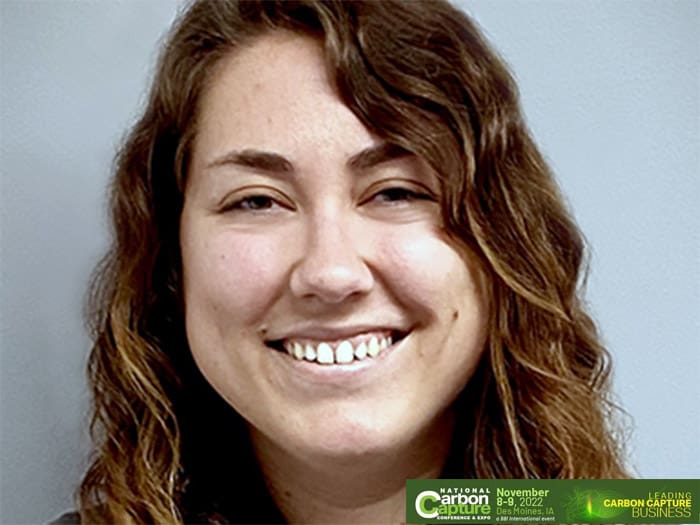
Establishing a site-specific groundwater monitoring protocol sensitive to changes in the groundwater chemistry related to potential leakage and also sensitive to natural variability will be imperative for developing cost-effective and robust testing and monitoring plans.
In CCUS projects, a site-specific testing and monitoring plan is mandatory to ensure the protection of underground sources of drinking water (USDWs) from Class VI injection well practices. As these projects have long durations with multiple phases, it is imperative for the groundwater monitoring program to be cost-effective with a robust sensitivity to detect any leakage.
Previously demonstrated changes in pH, carbonate chemistry, and certain trace elements (i.e., those that form strong-complexing anions) are geochemical indicators of initial CO2 leakage in relatively dilute aquifers. In this case study, SCS Engineers examine the sensitivity of dilute aquifer chemistry (major and minor cations and anions) to the leakage of CO2 and brines from the injection formation. We use an inverse thermodynamic modeling approach to simulate the effect of the progressive intrusion of CO2 and brines from the injection zone on the geochemical composition of the overlying dilute aquifer waters. From this, we can infer which geochemical parameters are most likely to be affected by the potential intrusion of CO2 and brines.
To attend this live presentation of Geochemical Effects of CO2, register for the upcoming National Carbon Capture Conference on November 8-9 in Des Moines, Iowa. Visit SCS Engineers at booth 120. Meet Kacey Garber.

EPA permit requirements for Class VI injection wells explicitly include incorporating a Testing and Monitoring Plan to optimize protection of USDWs – Underground Sources of Drinking Water. The regulatory requirement is for periodic monitoring of groundwater quality above the confining zone that may result from injection fluid movement through the confining zone. Testing and monitoring plans usually implement an antidegradation strategy. Take sufficient background data to characterize the statistical distributions of groundwater quality parameters before operation. Then the same water quality parameters are sampled periodically during and after injection and compared to the background. Any statistically significant increases over the background are investigated as a possible result of injectate migration above the confining zone.
To make the detection monitoring program more robust, there is a tendency to increase the number of well/parameter pairs in the monitoring network. This is done by adding additional wells to decrease well spacing and by adding monitoring parameters to make sure that nothing gets missed. Paradoxically, this tendency decreases the statistical power of the groundwater monitoring network by increasing the sitewide false positive rate (i.e., the number of false positive detections increases, often to an unreasonable degree). Each apparent statistically significant increase involves a costly investigation with greatly increased complexity. In this talk, we examine the sitewide false positive rate for sitewide groundwater monitoring networks and its relationship to the number of well/parameter pairs and discuss how hydrologic and geochemical knowledge and characterization can be used to build a more robust and cost-effective groundwater monitoring plan that is protective of USDWs near Class VI injection wells.
To attend this live presentation, register for the upcoming National Carbon Capture Conference November 8-9 in Des Moines, Iowa. Visit SCS Engineers at booth 120. Meet Charles Hostetler.

Cutting food loss and waste is widely recognized as one of the most powerful levers we have to address climate change and preserve our natural resources. In the United States alone, surplus food accounts for 4% of our greenhouse gas emissions, 14% of all freshwater use, and 18% of all cropland use. We’re wasting precious resources to produce and ship food only to have it end up in a landfill or rot in a field. [ReFED]
These are key action areas where the food system can focus its efforts over the next decade to prevent, rescue, and recycle food at risk of becoming waste. Strengthening food rescue and recycling anything remaining into compost or anaerobic digestion facilities creates beneficial by-products.
The USDA offers grants of up to $300,000 to composting and food waste reduction pilot projects benefiting community food waste and production programs.
Eligible projects can be in rural, urban, and suburban communities. The application deadline is fast approaching on September 1, 2022. USDA anticipates making selections by October 30, 2022, and executing the grant awards by February 8, 2023.
Visit SCS Engineers to learn more about this grant opportunity, check program qualifications, and sign up for free consulting supporting communities interested in this unique USDA grant program.
USDA GRANT for Composting | Food Waste Reduction ELIGIBILITY CRITERIA and RESOURCES

Hold The Plastic, Please! Consumers who purchase restaurant food for home delivery don’t often require plastic straws, disposable plastic cutlery, and single-use plastic packets of ketchup, soy sauce, and mustard that come along with it. Many restaurants and food delivery services have smartened up and made these optional choices. So, if you want a little less plastic with your food, let your local restaurants know. It will save them and you money and works toward reducing the amount of plastic floating around our oceans.
Beyond Plastics recently published a free, downloadable guide called “Hold The Plastic, Please – A Restaurant’s Guide To Reducing Plastic.” The guide offers restaurant owners detailed, practical, and inspiring advice on how to reduce the use of plastic in their operations and how to effectively convey those changes to customers, reporters, and the general public.
Beyond Plastics is a nationwide project based at Bennington College in Bennington, Vermont, whose mission is to end plastic pollution by being a catalyst for change. It takes changes at every level of our economy and civil life to stem the tide of plastic pollution. Individuals can take small actions in their everyday lives to be part of a growing movement to make a difference. Corporations can initiate changes in their purchasing and packaging habits; governments can impose bans and adopt laws that require extended producer responsibility.

Many landfills are still using hand-held monitoring of methane “hot spots” for compliance purposes while relying on models to estimate LFG emissions. Although technological developments in optical remote sensing and other methods offer significant improvements to measuring actual surface emissions from landfills, no single technology or method has risen to the top of the scientific hierarchy, gained universal acceptance, and achieved regulatory approval. Clearly, the technological advances provide more comprehensive methods for measuring methane concentration, identifying methane hot spots and leaks, and providing better coverage of the entire landfill surface. However, some technology falls short in their ability to provide accurate, consistent, and repeatable methane flux or emissions measurements.
As monitoring technology evolves, so have the various ways SCS takes measurements, from source level, drones, and high-altitude aircraft, to satellites. This paper presented at A&WMA by Patrick Sullivan and Raymond Huff summarises and provides details on the following methods:
• First order decay (FOD) modeling for landfills without active LFG collection systems.
• Non-FOD modeling for landfills without active LFG collection systems.
• FOD modeling with measured LFG collection.
• Non-FOD models with various site-specific data input.
• Measured LFG collection with estimated collection efficiency.
• Surface emission monitoring for compliance purposes.
• Ground-based or low-altitude imaging for concentration or hot spot measurement.
• Satellite and aerial imaging for concentration or hot spot measurement.
• Flux chamber testing.
• Ground-level plume measurement.
• Micrometeorology.
• Stationary path measurement.
• Reverse air dispersion modeling.
• Tracer studies.
• Low or high-altitude imaging.
• Hybrid methods.
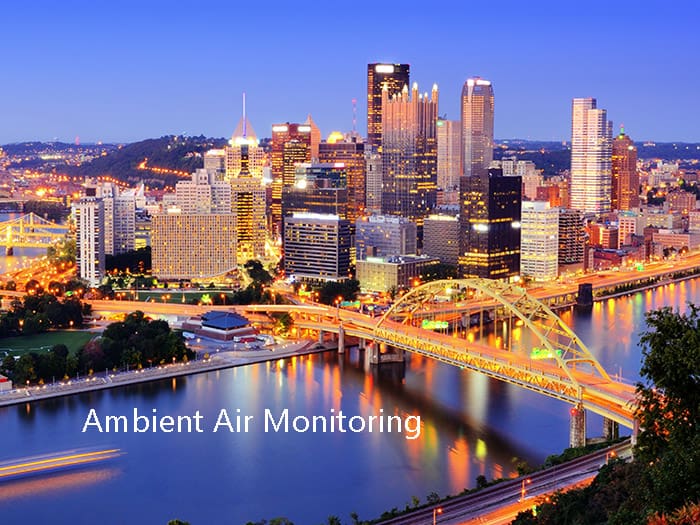
The 2022 NAAMC, sponsored by US EPA in conjunction with the Association of Air Pollution Control Agencies and the National Association of Clean Air Agencies, is a must-attend event for federal, state, local, and tribal air pollution organizations involved with operating, planning, or managing air monitoring networks and reporting data to AQS, and AIRNOW.
In addition to essential training on air monitoring topics, these SCS Engineers professionals will present the following sessions:
Sergio Valenzuela – Quantifying Salton Sea’s Harmful PM During High Wind Events
This study analyzes the correlated TEOM data (centric to high wind event days) and PQ200 data in comparison with TEOM data during “clear” (≤5-mph) days to determine the concentration levels of PM created during high wind events. Also, the incorporation of wind rose diagrams, created using wind speed/direction data collected at meteorological towers, aids in understanding varying PM concentrations relative to their deployment site properties. This study provides an essential tool for understanding the amount of exposure that neighboring communities are experiencing during high wind events and how IID’s implemented mitigation efforts will look moving forward. Read the abstract.
Jose Landeros – Air Monitoring in Mexicali, Mexico. The Evolution of Air Pollution Monitoring in a Border City.
Advancements in technology have influenced the way air pollution is measured and how air pollution data is received, shared, and acted upon by stakeholders. Using Mexicali, México as an example, this presentation will review the evolution of the air pollution monitoring technologies used to measure and inform stakeholder actions. Stakeholders now can access real-time air quality data from platforms that integrate information from low-cost sensors and regulatory sites. The evolution of technology for measuring and presenting data has been remarkable – from large, manual, analog equipment to small, automated, digital equipment with communication systems that allow for real-time data access. Read the abstract.
Additional Resources: